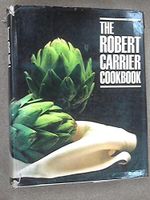Advertisement
Preparation info
- Serves
2
- Difficulty
Easy
Appears in
Published 1965
Ingredients
5 - salt and freshly ground black pepper
1 tablespoon
Method
Break eggs into a bowl and season to taste with salt and freshly ground black pepper. Heat the omelette pan gradually on a medium heat until it is hot enough to make butter sizzle on contact. Add water to eggs and beat with a fork or wire whisk just enough to mix yolks and whites. Add butter to heated pan and shake until butter coats bottom of pan evenly. When butter is sizzling, pour in the be


